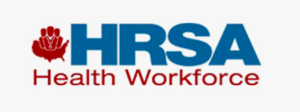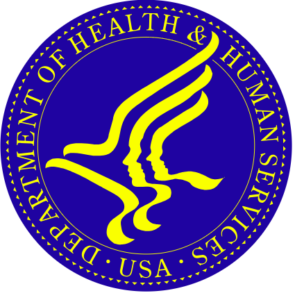- CMS: Medicare Program; Implementation of Prior Authorization for Select Services for the Wasteful and Inappropriate Services Reduction (WISeR) Model
- Public Inspection: CMS: Medicare Program: Implementation of Prior Authorization for Select Services for the Wasteful and Inappropriate Services Reduction Model
- CMS: Secretarial Comments on the CBE's (Battelle Memorial Institute) 2024 Activities: Report to Congress and the Secretary of the Department of Health and Human Services
- HHS: Patient Protection and Affordable Care Act: Marketplace Integrity and Affordability
- HRSA Announces Action to Lower Out-of-Pocket Costs for Life-Saving Medications at Health Centers Nationwide
- Public Inspection: HHS: Patient Protection and Affordable Care Act: Marketplace Integrity and Affordability
- Increased Risk of Cyber Threats Against Healthcare and Public Health Sector
- Eight Hospitals Selected for First Cohort of Rural Hospital Stabilization Program
- Announcing the 2030 Census Disclosure Avoidance Research Program
- CMS: Medicare Program; Hospital Inpatient Prospective Payment Systems for Acute Care Hospitals and the Long-Term Care Hospital Prospective Payment System and Policy Changes and Fiscal Year 2026 Rates; Requirements for Quality Programs; and Other Policy Changes; Correction
- CMS: Medicare Program; Hospital Inpatient Prospective Payment Systems for Acute Care Hospitals and the Long-Term Care Hospital Prospective Payment System and Policy Changes and Fiscal Year 2026 Rates; Requirements for Quality Programs; and Other Policy Changes; Correction
- CMS: Medicare and Medicaid Programs; Contract Year 2026 Policy and Technical Changes to the Medicare Advantage Program, Medicare Prescription Drug Benefit Program, Medicare Cost Plan Program, and Programs of All-Inclusive Care for the Elderly; Correction
- CMS: Medicare and Medicaid Programs; Contract Year 2026 Policy and Technical Changes to the Medicare Advantage Program, Medicare Prescription Drug Benefit Program, Medicare Cost Plan Program, and Programs of All-Inclusive Care for the Elderly; Correction
- CMS: Medicare Program; Prospective Payment System and Consolidated Billing for Skilled Nursing Facilities; Updates to the Quality Reporting Program for Federal Fiscal Year 2026
- CMS: Medicare Program; FY 2026 Hospice Wage Index and Payment Rate Update and Hospice Quality Reporting Program Requirements
Promoting A Healthy Mouth for Every Body: New HRSA Resources Available
 Led by HRSA’s Office of Special Health Initiatives, raises awareness about the connection between oral health and overall health. HRSA now has new content on oral health and nutrition, emphasizing the importance of healthy eating as a foundation for good oral health. Additionally, new resources highlight the critical role of oral health during pregnancy, including the importance of maintaining dental care for the well-being of both pregnant people and baby. Discover the latest content and resources to support oral health in the community.
Led by HRSA’s Office of Special Health Initiatives, raises awareness about the connection between oral health and overall health. HRSA now has new content on oral health and nutrition, emphasizing the importance of healthy eating as a foundation for good oral health. Additionally, new resources highlight the critical role of oral health during pregnancy, including the importance of maintaining dental care for the well-being of both pregnant people and baby. Discover the latest content and resources to support oral health in the community.
Expanding The Opioid Use Disorder Medication Treatment Workforce in Rural Communities Through The RCORP Initiative
Key findings from this study suggest that the RCORP initiative may have played an important role in expanding the supply of buprenorphine prescribers nationally. While the impacts of the removal of the DEA-waiver since 2023 have not yet been identified, counties where RCORP grantees operated showed larger increases in the number of DEA-waivered clinicians over the study period compared to non-RCORP counties, amounting to an average of almost four more clinicians per 100,000 than non-RCORP counties.
Request for Proposals: Evaluation of Migration and Population Trends in Appalachia

ARC is seeking proposals from qualified researchers to examine migration and population change in the Appalachian Region.
The research will incorporate a variety of datasets, tools, and methodologies to provide an overview of migration and population trends in the region, highlighting how current trends differ from those in the past. Analysis should provide a high-level look at trends dating back to at least 1960, as well as an in-depth examination of trends over the past decade.
The contractor will deliver a final report, executive summary, and state-level fact sheets that help answer the following questions:
- What are the migration and population trends throughout the Region? How have these trends changed over time?
- What are the characteristics of the places that are gaining/losing population? What are the characteristics of people who are migrating?
- How has migration changed the demographic profiles of communities throughout Appalachia?
- How have these demographic changes impacted the places gaining/losing population?
Key dates are outlined below. If you have any questions, please reach out to ARC’s economist Logan Thomas.
RFP open date: August 7, 2024
Questions due: September 4, 2024
Answers posted on arc.gov: September 11, 2024
Proposal due date: October 2, 2024
Interviews: October 21 – November 20, 2024
Selection date: December 11, 2024
Contract period: January – September 2025
Small-Town Patients Face Big Hurdles as Rural Hospitals Cut Cancer Care

The night before her chemotherapy, Herlinda Sanchez sets out her clothes and checks that she has everything she needs: a blanket, medications, an iPad and chargers, a small Bible and rosary, fuzzy socks, and snacks for the road.
After the 36-year-old was diagnosed with stage 3 breast cancer in December, she learned that there weren’t any cancer services in her community of Del Rio, a town of 35,000 near the Texas-Mexico border.
To get treatment, she and her husband, Manuel, must drive nearly three hours east to San Antonio. So they set an alarm for 4 a.m., which allows for just enough time to roll out of bed, brush their teeth, and begin the long drive navigating dark roads while watching for deer.
About an hour before they arrive at the cancer clinic, the couple pulls over to quickly eat fast food in the car. The break gives Herlinda time to apply ointment on the port where the needle for her chemotherapy will be inserted.
“It numbs the area, so when I get to the infusion room the needle won’t hurt,” she said.
For rural patients, getting cancer treatment close to home has always been difficult. But in recent years, chemotherapy deserts have expanded across the United States, with 382 rural hospitals halting services from 2014 to 2022, according to a report published this year by Chartis, a health analytics and consulting firm.
After Hitting Record Low, Uninsured Rates Climb: CDC
From Beckers
After hitting record lows in 2023, uninsured rates are beginning to rise again, according to new CDC data.
According to CDC estimates published August 5, 8.2% of Americans were uninsured in the first quarter of 2024, up from 7.7% in the fourth quarter of 2023.
In the second quarter of 2023, the CDC recorded a record-low uninsured rate of 7.2%. Government estimates predict the uninsured rate will rise over the next decade, driven by Medicaid disenrollment and the expiration of ACA subsidies.
The CDC also said 27.1 million people were uninsured in the first quarter of 2024, up from 25.5 million in the fourth quarter of 2023.
The number of people under 65 with public coverage declined from 75.9 million in the fourth quarter of 2023 to 73.5 million in the first quarter of 2024. Federal agencies estimated insured rates would drop as states began disenrolling Medicaid enrollees for the first time since 2020.
Continuous coverage requirements in place during the COVID-19 pandemic helped drive uninsured rates to new lows. At least 24.8 million people have been disenrolled from Medicaid since March 2023, according to KFF.
Though the number of people with public coverage has decreased, the number of adults under 65 with private insurance was the same between the last quarter of 2023 and the first quarter of 2024, at 176.7 million.
ACA exchange enrollment increased to 16.6 million in the first quarter of 2024, up from 13.3 million in the last quarter of 2023. Federal agencies have worked to steer individuals losing Medicaid coverage to exchange plans.
Enhanced subsidies that offset the premiums for marketplace plans are set to expire at the end of 2025, unless Congress chooses to extend them.
Estimates from the Congressional Budget Office in June projected the uninsured rate will hit 8.9% by 2034.
CMS Launches Oral Health Cross Cutting Initiative
 The Centers for Medicare and Medicaid Services (CMS) released the inaugural Oral Health Cross Cutting Initiative (CCI) fact sheet. This initiative is committed to ensuring equitable access to oral health care, eliminating disparities, expanding oral health service availability, and effectively engaging stakeholders. It aims to improve the oral health and wellness of individuals who have Medicare, Medicaid, and Marketplace coverage.
The Centers for Medicare and Medicaid Services (CMS) released the inaugural Oral Health Cross Cutting Initiative (CCI) fact sheet. This initiative is committed to ensuring equitable access to oral health care, eliminating disparities, expanding oral health service availability, and effectively engaging stakeholders. It aims to improve the oral health and wellness of individuals who have Medicare, Medicaid, and Marketplace coverage.
Quality Measures of Oral Health Care for Children Released
The Consortium for Oral Health Systems Integration and Improvement released “Selected Quality Measures of Oral Health Care for Children.” The new brief provides a national summary of selected oral health care quality measures for children including oral evaluation, dental services, topical fluoride for children, and sealant receipt on permanent first molars.
Oral Health Resources for Older Adults Available

PCOH has added two new resources on oral health care for older adults to their Request Materials page. “Oral Health Care Tips for Older Adults” is a resource with tips for oral health care for older adults including the importance of regular dental care and dental access. “Oral Care for Long-Term Care Residents” is a tri-fold brochure with tips providers need to know for treating adults in long-term care facilities. Topics include dry mouth, denture care, and gum disease. These resources, and many others, are available to download or ship for free from the Request Materials page.
FDA Approves First Colorectal Cancer Blood Test
The FDA approved the Guardant Health, Inc. Shield, a test intended to screen for colorectal cancer (CRC) using blood collected in the Guardant Shield Blood Collection Kit. The test is used for CRC screening in individuals at average risk for the disease who are 45 years of age or older. Patients with positive test results should have a colonoscopy since the test is not a replacement for diagnostic colonoscopy or for surveillance colonoscopy in high-risk individuals. Shield has limited detection (55%-65%) of Stage I colorectal cancer and does not detect 87% of precancerous lesions.
HHS Shuffle Aims to Address Cyberthreats, AI
 The Biden administration is overhauling its health IT functions to address the proliferation of cyberattacks on the sector and the growth of data and artificial intelligence in medical settings. Why it matters: The goals include setting an AI policy and strategy for HHS and streamlining critical infrastructure protection within the Administration for Strategic Preparedness and Response, or ASPR, per a notice to be published in the Federal Register. Click here to learn more.
The Biden administration is overhauling its health IT functions to address the proliferation of cyberattacks on the sector and the growth of data and artificial intelligence in medical settings. Why it matters: The goals include setting an AI policy and strategy for HHS and streamlining critical infrastructure protection within the Administration for Strategic Preparedness and Response, or ASPR, per a notice to be published in the Federal Register. Click here to learn more.
